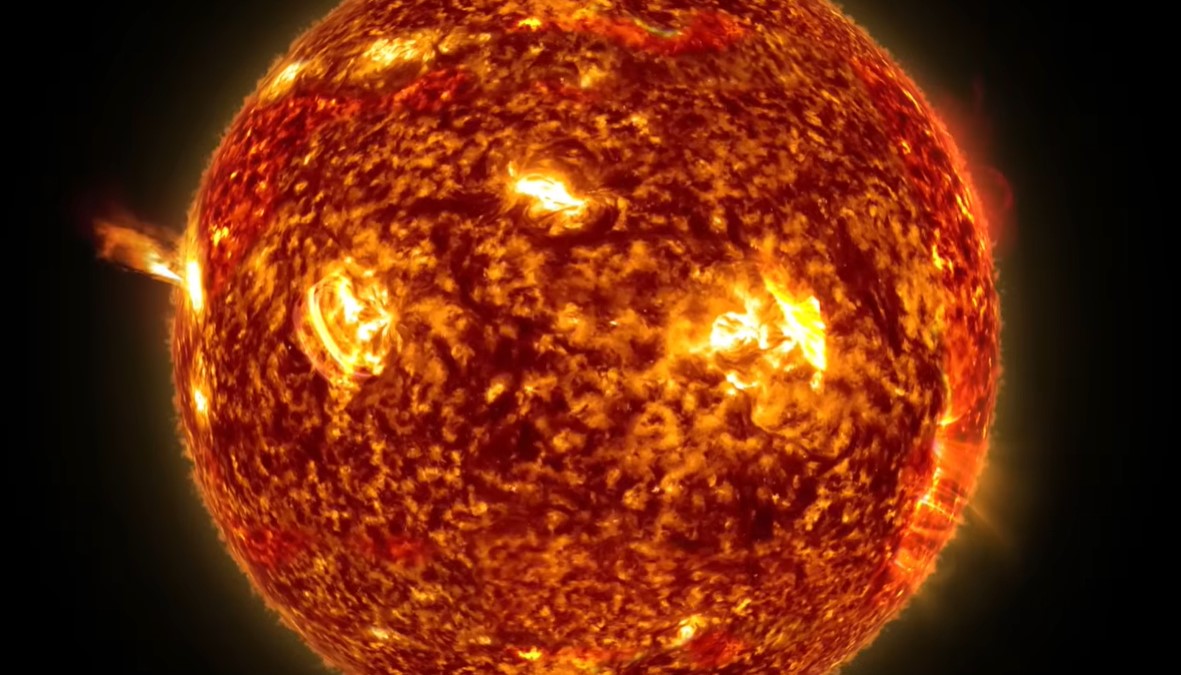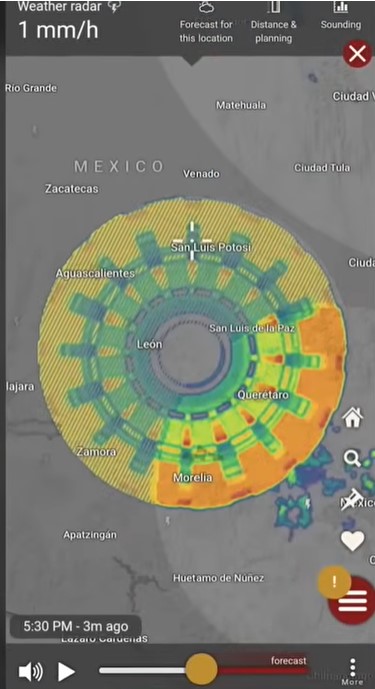In a shocking turn of events, the sun has unleashed a catastrophic X51-class solar flare, sending shockwaves through Earth’s upper atmosphere and disrupting communication systems worldwide. This unprecedented eruption, which occurred at precisely 5:00 AM Eastern Standard Time on November 11, 2025, is being hailed as one of the most powerful solar events recorded in recent years, with scientists and officials scrambling to assess its impact.

Originating from a hyperactive region termed Sunspot AR4274, the flare has left a trail of destruction, particularly affecting high-frequency radio communications across Africa and Europe. Airlines have reported significant disruptions, with flights rerouted to avoid hazardous radiation exposure, and emergency services struggling with communication failures across affected regions. Radio operators have experienced widespread signal fading, leading to an increasing urgency for people to be prepared—a stark reminder that the modern world remains alarmingly vulnerable to cosmic forces beyond its control.
As the electromagnetic fallout from the flare cascades towards Earth, experts from the Space Weather Prediction Center are on high alert. They estimate that the aftermath could include overlapping coronal mass ejections (CMEs), which could arrive on Earth around midday on November 12—a situation dangerously poised to escalate into a severe geomagnetic storm mapped to reach G4 intensity. The implications are daunting: communication networks, navigation systems, and even electrical grids could be severely disrupted, risking catastrophic failures. Imagery from disaster-stricken areas suggests a grim reality where power outages could render entire regions helpless, darkened under the weight of an unstoppable solar force.

Solar flares are categorized on a scale that ranges from A to X, with the most cataclysmic eruptions classified as X. The X5 flare that erupted on November 11 is on the extreme end of the scale, discharging energy equivalently to billions of nuclear weapons. The ramifications of this intensity are twofold; the immediate effect is the instant ionization of the Earth’s upper atmosphere, essentially rendering radio communications tenuous at best. Experts warn that the initial radiation can cause radio blackouts within minutes, while subsequent coronal mass ejections are anticipated to sweep through Earth’s magnetic field within the next 24 hours.
November 11, 2025, serves not only as a date marking an extraordinary cosmic phenomenon, but it also sets the stage for an impending upheaval that could see the world disrupted in a way few could have expected. The astronomical event has revived fears reminiscent of the infamous Carrington Event of 1859, which crippled telegraph systems and caused fires in communications centers across North America. Electronic systems today are far more interconnected, presenting a scenario where power grids could face cascading failures across continents, plunging nations into darkness and chaos.

Modern society’s dependence on stable electrical power raises sobering questions about our ability to respond effectively to such overwhelming natural events. As we await the fateful impact of the anticipated coronal mass ejections, experts are echoing warnings that society may not be prepared to cope with the aftershocks of a significant solar storm. The looming prospect of disrupted communication will only amplify the potential for widespread panic, resource shortages, and economic turmoil. Rescue operations could be hindered, and hospitals may struggle to maintain essential services—dependencies that many take for granted.
The visual allure of the auroras, which may stretch into lower latitudes than have been seen in decades, stands in stark contrast to the looming technological apocalypse. And while the shimmering curtains of light can be admired, those waiting to catch a glimpse of nature’s spectacle must be cognizant of the shadows it casts—a reminder of the fragility of modern commerce and daily life hanging in the balance.

Despite the impending doom, it is imperative to note that while the solar flare itself does not pose a physical threat to Earth, it presents dire consequences for our interconnected infrastructure. Satellite systems, vital for GPS and communications, are now under threat. Spacecraft operators have been forced to initiate protective protocols, minimizing the risk of damage from the charged particles projected to bombard the planet. Aviation systems are implementing urgent strategic reroutes—testaments to the preparedness of humanity in adapting to nature’s fickle hand.
While we find ourselves navigating the tension between awe and dread in the face of this extraordinary occurrence, scientists and government officials remain vigilant, monitoring the solar storm’s trajectory. An urgency reverberates throughout the scientific community, with astronomers and meteorologists pooling resources to bolster early detection systems and develop contingency plans in the wake of solar calamity.

As we stand on the threshold of potential disasters on multiple fronts, the need for preparedness—a clear action plan as dire as the forces we cannot control—should be firmly in the minds of political figures and the public alike. The unyielding reliance on technology, paired with a significant lack of awareness in general communication about the looming solar phenomenon, could exacerbate the reach of chaos if widespread outages occur.

In essence, the November 11 solar flare serves as both an incredible astronomical event and a stark warning of the extraordinary vulnerabilities our society faces. Science has advanced immeasurably, yet the inherent unpredictability of cosmic forces continues to remind us that we are but a fleeting moment in the vast, unpredictable tapestry of the universe. As we brace for the impact of the coronal mass ejections, individuals and communities are encouraged to remain informed, to communicate and strategize, and—most importantly—to prepare for the uncertainties that lie ahead. The fragility of modern civilization, once again laid bare in the wake of the sun’s wrath, urges us to confront the power of nature and, perhaps, to find resilience in the face of adversity.





